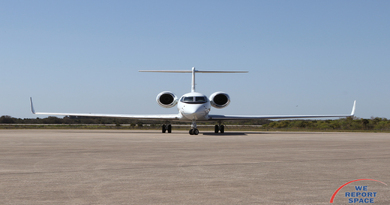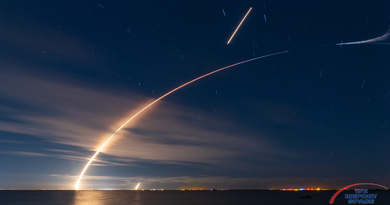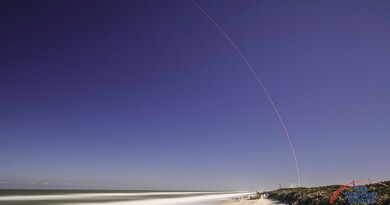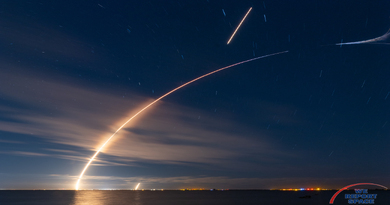OSIRIS-REx Team: Two Ounces is Bennu-ful

KENNEDY SPACE CENTER: The mission plan for OSIRIS-REx is to visit the asteroid Bennu and bring back anywhere from 2 ounces to 4.4 pounds of material. Since Bennu is carbon-rich, the scientists might discover the building blocks of life, the same building blocks that might have crashed into Earth and began the origin of life on Earth. But with such a wide span - two ounces to 4.4 pounds, I spoke to the OSIRIS-REx team about their secret goals and desires.

At an August 20, 2016 media event at Kennedy Space Center's Payload Hazardous Servicing Facility, I had a chance to talk with Dante Lauretta and Heather Enos about OSIRIS-REx. Dante Lauretta is a Professor of Planetary Science and Cosmochemistry at the University of Arizona’s Lunar and Planetary Laboratory. He is the principal investigator. Heather Enos is the Deputy Principal Investigator.
If your directive was to run to the store and bring back anywhere from 2 ounces to 4.4 pounds of sugar, you might wonder what type of pie your spouse is baking. But OSIRIS-REx's directive is to travel 4.4 billion miles to asteroid Bennu and bring back anywhere from 2 ounces to 4.4 pounds of carbonaceous asteroid regolith. It is a wide-ranging goal.
WRS: "You have three tries to get a sample. If, on the first try, you get exactly two ounces, do you go back and try to get closer to four pounds?"
Dante Lauretta: "The OSIRIS-REx policy is one successful sampling attempt. The mission requirement is 60 grams or two ounces of material. I am pretty sure if we get that successful sample, we are done. It's like 'Baby on Board', get it in that sample return capsule and then come home. You would not do anything to risk that material."
Heather Enos: "Safety is our number one concern. If we are confident that we have a sample that is plentiful and able to return to Earth and we will be able to distribute it for science value, we would not risk going back for a second sample."
"WRS: 2 ounces doesn't sound like it's plentiful when you have to split it up for future generations. What is your dream goal? If you end up with one pound, will you be like 'Yes!!!'?"

Heather Enos: "OSIRIS-REx's requirement is 60 grams. We can collect up to 2 kilograms. 2 ounces may seem like a small sample, but analytical tools at laboratories require a very small amount of material. For example, think about a vial of blood. You can distribute it to multiple laboratories. Given the precision of the scientific tools, you can do a DNA sequence of someone's entire body from just a drop. So, I would say, because we are so careful at the distribution, you can do a lot with 2 ounces."
WRS: So, if you come back with exactly two ounces, you are fine with that?
Heather Enos: "Oh, that would be huge. Yes, two ounces would be plenty to do decades and decades of science."
WRS: So, what will you do if you get four pounds? Will you be selling some on E-bay?
Heather Enos: Laughter
WRS: I can picture tiny vials in the KSC Visitor Center Gift Shop...
Heather Enos: "We could only be so lucky."
While the OSIRIS-REx team is very personable and can explain their mission in plain terms, their focus on the mission and their desire to "not be greedy" is commendable. The mission is coming in under budget because of their discipline to not allow scope creep into the project.
But here's hoping for the full 2.2 kilograms to return to Earth on September 24, 2023.

Stunning, full color photo book covering every east coast launch spanning 2014-2015, including the first-ever powered landing of a SpaceX Falcon 9 rocket.
More Info



